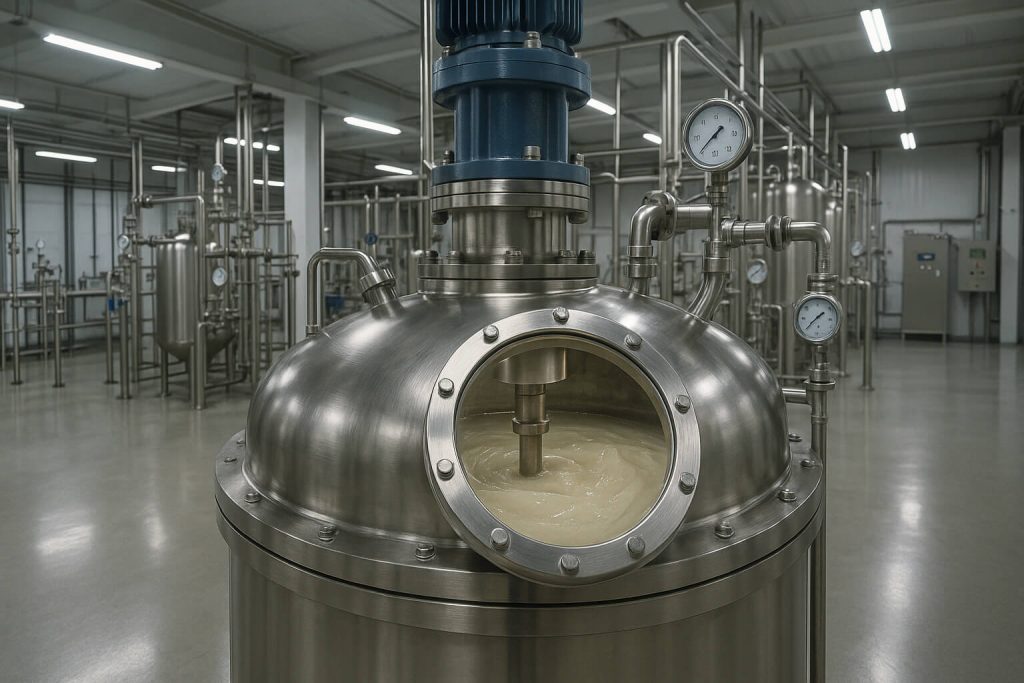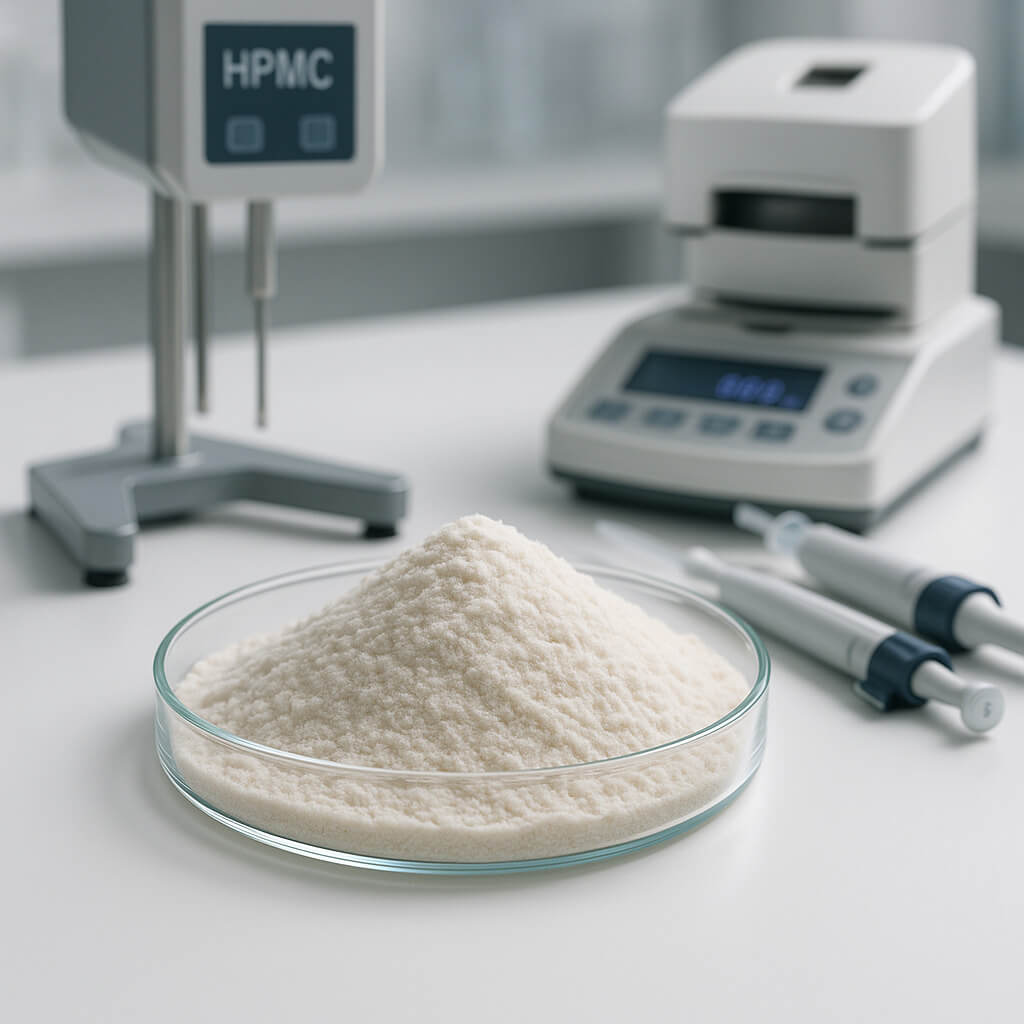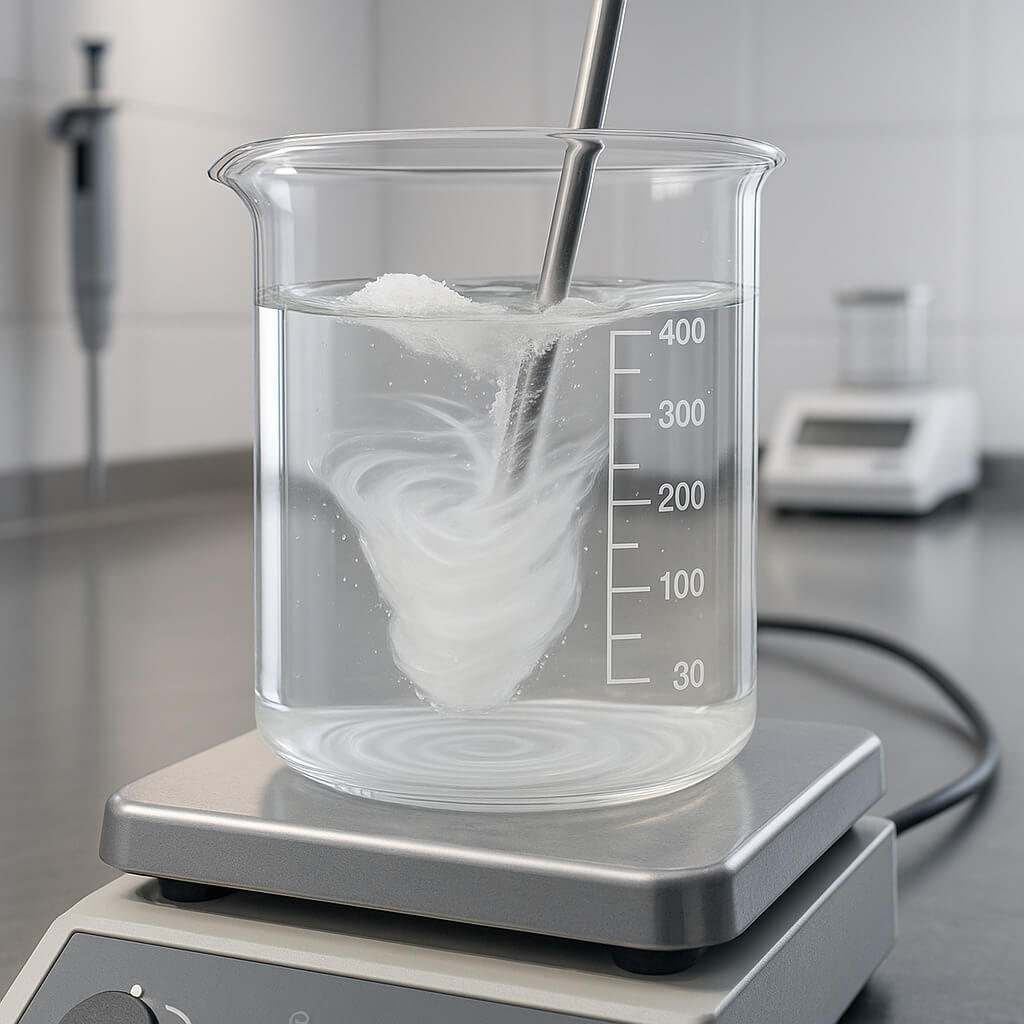Hydroxypropyl methylcellulose (HPMC) solution viscosity plays a critical role in determining the success of your product formulations across multiple industries. Whether you’re developing pharmaceuticals, construction materials, or food products, understanding HPMC viscosity is essential for achieving optimal performance. This article addresses the common challenges manufacturers face when working with HPMC solutions, providing practical insights into measuring, controlling, and optimizing viscosity for your specific applications. With decades of industry experience and technical expertise, we’ll guide you through the key factors that influence HPMC solution viscosity and how to leverage them for superior product outcomes.

1. What Factors Determine the Viscosity of HPMC Solutions?
The viscosity of HPMC solutions is influenced by several interconnected factors that manufacturers must understand to achieve consistent product performance. Molecular structure stands as the primary determinant of how HPMC behaves in solution.
Here’s what you need to know: The molecular weight of HPMC directly correlates with solution viscosity. Higher molecular weight grades produce more viscous solutions at the same concentration due to increased polymer chain entanglement. This relationship isn’t linear but follows a power law relationship.
The substitution degree—specifically the ratio of methoxyl to hydroxypropyl groups—significantly impacts viscosity behavior. HPMC with higher methoxyl content typically exhibits greater viscosity and thermal gelation properties, while higher hydroxypropyl substitution improves solubility in cold water.
Concentration plays a fundamental role in determining viscosity. HPMC solutions demonstrate non-Newtonian behavior, with viscosity increasing disproportionately as concentration rises. This relationship can be expressed as:
η = K × C^a
Where η represents viscosity, C is concentration, K is a constant related to polymer characteristics, and a is the power law exponent typically ranging from 3.0 to 5.0 for HPMC.
Temperature dramatically affects HPMC solution viscosity through two distinct mechanisms. At lower temperatures (below 20°C), viscosity increases due to enhanced hydrogen bonding. As temperature rises (20-50°C), viscosity decreases following the Arrhenius equation.
| Temperature Range (°C) | Viscosity Behavior | Primary Mechanism |
|---|---|---|
| Below 20°C | Zunehmend | Enhanced hydrogen bonding |
| 20-50°C | Decreasing | Reduced polymer chain interaction |
| Above 50°C | Rapidly increasing | Thermische Gelierung |
| Cooling from gel state | Reversible | Dissolution of hydrophobic associations |
Shear rate significantly influences HPMC solution viscosity due to its pseudoplastic (shear-thinning) nature. At higher shear rates, polymer chains align in the direction of flow, reducing internal friction and viscosity.
2. How Do You Measure HPMC Solution Viscosity Accurately?
Accurate viscosity measurement is crucial for quality control and consistent product performance. The choice of measurement method depends on your specific application requirements and the rheological properties you need to evaluate.
Rotational viscometry remains the industry standard for HPMC solution characterization. This method uses a spindle rotating at controlled speeds to measure resistance to flow. The Brookfield viscometer is commonly employed, with measurements typically reported in centipoise (cP) or millipascal-seconds (mPa·s).
But here’s the challenge: Different measurement protocols can yield varying results for the same HPMC solution. Standardization is essential for meaningful comparisons between batches or suppliers.
| Viskosimetertyp | Measurement Range | Best For | Einschränkungen |
|---|---|---|---|
| Brookfield RV | 100-8,000,000 cP | Allgemeiner Zweck | Limited for very low viscosity |
| Brookfield LV | 1-2,000,000 cP | Low viscosity solutions | Less accurate at high viscosity |
| Cone and Plate | 0.5-1,000,000 cP | Precise shear rate control | Sample size limitations |
| Capillary | 0.5-100,000 cP | High shear applications | Complex setup |
Equipment calibration is critical for reliable measurements. Calibration should be performed using certified viscosity standards that match your expected measurement range. Temperature control during measurement is equally important—even small temperature fluctuations can significantly affect results.
Common measurement errors include improper sample preparation, incorrect spindle selection, failure to maintain consistent temperature, inadequate equilibration time, and inappropriate spindle speed selection.
For optimal results, follow these testing protocols:
- Prepare solutions at specified concentrations (typically 1-2% w/v)
- Allow complete hydration (minimum 24 hours at controlled temperature)
- Deaerate solutions before measurement
- Maintain temperature at 20°C ± 0.1°C during testing
- Select appropriate spindle and speed combinations
3. Why Does HPMC Solution Viscosity Change During Processing?
HPMC solution viscosity can change significantly during processing, creating challenges for manufacturers seeking consistent product performance. Understanding these changes is essential for maintaining quality control.
Thermal stability represents a primary concern when working with HPMC solutions. Below the thermal gelation temperature (typically 65-90°C, depending on substitution type), HPMC solutions generally maintain stable viscosity during short-term heating. However, prolonged exposure to elevated temperatures can lead to polymer degradation.
Want to know something interesting? The thermal gelation behavior of HPMC can be advantageous in certain applications, such as sustained-release drug formulations, where it creates a diffusion barrier at body temperature.
| Temperaturbereich | Processing Impact | Viscosity Change | Reversibility |
|---|---|---|---|
| 20-50°C | Normal processing | Gradual decrease | Fully reversible |
| 50-65°C | Approaching gelation | Initial decrease, then increase | Reversible |
| 65-90°C | Thermische Gelierung | Rapid increase, gel formation | Reversible upon cooling |
| >90°C (prolonged) | Degradation | Permanent decrease | Irreversible |
pH significantly affects HPMC solution stability. While HPMC maintains relatively stable viscosity across a broad pH range (3-11), extreme pH conditions can accelerate hydrolysis of the cellulose backbone, leading to chain scission and viscosity reduction.
Storage time impacts viscosity through several mechanisms including continued hydration in freshly prepared solutions, microbial degradation in unpreserved solutions, oxidative degradation, and physical aging through slow conformational changes.
Mechanical processing introduces shear forces that can temporarily or permanently alter HPMC solution viscosity. High-shear mixing, homogenization, and pumping operations can break polymer chain entanglements, reducing viscosity.
4. How Can You Adjust HPMC Solution Viscosity for Specific Applications?
Adjusting HPMC solution viscosity to meet specific application requirements is a common challenge for formulators. Several approaches can be employed, depending on your product needs and processing constraints.
Concentration adjustment represents the most straightforward method for viscosity modification. Increasing HPMC concentration provides higher viscosity, while dilution reduces it. However, this approach may affect other formulation properties.
Die Wahrheit ist, concentration adjustments alone may not provide the precise rheological profile needed for your application. More sophisticated approaches are often required.
Blending different HPMC grades offers a powerful strategy for viscosity customization. By combining high and low viscosity grades in various ratios, you can achieve intermediate viscosities with tailored rheological properties.
| Viscosity Adjustment Need | Empfohlener Ansatz | Vorteile | Überlegungen |
|---|---|---|---|
| Minor increase (10-30%) | Increase concentration | Simple implementation | May affect other properties |
| Major increase (>50%) | Add higher viscosity grade | Better efficiency | May require reformulation |
| Improved thixotropy | Add small amount of very high viscosity grade | Enhanced application properties | Careful dispersion needed |
| Reduced viscosity with maintained functionality | Use lower viscosity grade at higher concentration | Maintains solid content | May affect other functional properties |
Compatibility with other ingredients must be considered when modifying HPMC solution viscosity. Certain additives can significantly impact viscosity through various interaction mechanisms:
- Electrolytes (salts) typically reduce HPMC solution viscosity by disrupting hydrogen bonding and polymer hydration.
- Water-miscible solvents like alcohols, glycols, and glycerin can either increase or decrease viscosity depending on concentration and type.
- Surfactants generally reduce HPMC solution viscosity through polymer-surfactant interactions.
- Other polymers may form synergistic or antagonistic interactions with HPMC, significantly affecting solution viscosity.
Case studies across industries demonstrate successful viscosity optimization strategies. In pharmaceutical tablet coating, blending a 4,000 mPa·s HPMC grade with a 100 mPa·s grade in a 70:30 ratio achieved improved atomization while maintaining adequate film formation. In cement-based tile adhesives, replacing a single 15,000 mPa·s HPMC grade with a blend of 4,000 and 50,000 mPa·s grades improved both initial grab and open time.
5. What Are the Critical Viscosity Ranges for Different HPMC Applications?
Different applications require specific HPMC viscosity ranges to achieve optimal performance. Understanding these requirements is essential for proper grade selection and formulation development.
Pharmaceutical applications utilize HPMC across a wide viscosity spectrum. Tablet coating solutions typically require 250-500 mPa·s (2% solution) to balance sprayability with film formation. Extended-release matrix formulations generally use higher viscosity grades (4,000-100,000 mPa·s) to control drug release rates.
Das Endergebnis ist selecting the appropriate viscosity grade dramatically impacts both manufacturing efficiency and final product performance.
| Pharmazeutische Anwendung | Typical Viscosity Range (2% solution) | Critical Performance Attributes |
|---|---|---|
| Immediate-release tablet coating | 250-500 mPa·s | Sprayability, film uniformity |
| Extended-release matrix tablets | 4,000-100,000 mPa·s | Controlled release rate, erosion resistance |
| Kapselherstellung | 3,000-5,000 mPa·s | Shell integrity, disintegration time |
| Ophthalmische Lösungen | 80-150 mPa·s | Ocular retention, comfort |
Construction industry applications rely heavily on HPMC’s viscosity-building properties. Tile adhesives typically require 15,000-50,000 mPa·s (2% solution) to provide appropriate open time and sag resistance. Renders and plasters benefit from 20,000-70,000 mPa·s grades that improve workability and water retention.
Food product applications utilize HPMC as a thickener, stabilizer, and texture modifier. Viscosity requirements vary widely depending on the specific application, from 2,000-5,000 mPa·s for sauces and dressings to 10,000-20,000 mPa·s for frozen desserts.
Personal care and cosmetic products utilize HPMC across various viscosity ranges depending on the formulation type and desired sensory properties. Shampoos and body washes typically incorporate 3,000-10,000 mPa·s grades, while creams and lotions often use 10,000-30,000 mPa·s grades.
6. How Does HPMC Solution Viscosity Compare to Other Cellulose Derivatives?
When selecting the optimal cellulose derivative for your application, understanding how HPMC solution viscosity compares to alternatives is essential for making informed decisions. Each cellulose ether offers distinct viscosity characteristics that influence performance.
Methylcellulose (MC) shares many properties with HPMC but exhibits some key differences in viscosity behavior. MC typically provides higher viscosity than HPMC at equivalent concentration and molecular weight due to its more hydrophobic nature. However, MC solutions demonstrate more pronounced thermal gelation, with gel formation occurring at lower temperatures.
Sie werden überrascht sein zu erfahren that this temperature-dependent viscosity difference makes HPMC preferred for hot-fill food applications and pharmaceutical processes requiring higher processing temperatures.
Carboxymethylcellulose (CMC) differs significantly from HPMC in its viscosity response to environmental conditions. As an anionic polymer, CMC solution viscosity is highly sensitive to pH and electrolyte concentration. While CMC can provide higher viscosity than HPMC at neutral pH, its viscosity drops dramatically in acidic conditions or high salt concentrations.
| Cellulosederivat | Relative Viscosity (2% solution) | pH Stability Range | Salt Tolerance | Thermische Gelierung |
|---|---|---|---|---|
| HPMC | Mäßig | 3-11 (Excellent) | Hoch | Yes (65-90°C) |
| MC | Hoch | 3-11 (Excellent) | Hoch | Yes (50-55°C) |
| CMC | Sehr hoch | 4-9 (Moderate) | Niedrig | NEIN |
| HEC | Hoch | 2-12 (Good) | Mäßig | NEIN |
Cost-performance analysis reveals important considerations when selecting between cellulose derivatives. While HPMC typically commands a higher price per kilogram than CMC or HEC, its superior stability across varying conditions often provides better cost-efficiency in challenging formulations.
Application-specific advantages of HPMC viscosity profiles include:
In pharmaceutical controlled release formulations, HPMC’s unique combination of high viscosity and thermal gelation creates robust diffusion barriers that maintain integrity throughout the gastrointestinal tract.
In construction applications, HPMC provides superior workability and water retention compared to other cellulose ethers, particularly in cement-based systems where its stability in highly alkaline environments is advantageous.
In food applications, HPMC’s surface activity combined with its viscosity-building properties enables unique functionalities such as egg replacement and oil reduction that other cellulose derivatives cannot match.
Abschluss
Understanding and optimizing HPMC solution viscosity is crucial for achieving superior product performance across pharmaceutical, construction, food, and personal care applications. As we’ve explored, multiple factors influence viscosity behavior, from molecular structure and concentration to processing conditions and environmental factors. By mastering measurement techniques, implementing appropriate adjustment strategies, and selecting the right viscosity grade for your specific application, you can overcome formulation challenges and deliver consistent, high-quality products. Morton’s extensive portfolio of HPMC grades and technical expertise can help you navigate these complexities and develop optimized solutions tailored to your unique requirements. Contact our technical team today to discuss how we can partner with you to enhance your product performance through precise viscosity control.
Häufig gestellte Fragen
Q1: What is the typical viscosity range for HPMC solutions used in pharmaceutical tablet coating?
Pharmaceutical tablet coating applications typically require HPMC solutions with viscosities in the range of 250-500 mPa·s (measured at 2% concentration). This range provides the optimal balance between sprayability and film-forming properties. Lower viscosity solutions may produce weaker films with poor barrier properties, while higher viscosity solutions may cause spray nozzle clogging and uneven coating distribution. For aqueous film coating, HPMC grades with nominal viscosities of 3-15 mPa·s (measured at 2% concentration, 20°C) are commonly used at 6-10% concentration in the coating solution.
Q2: Can HPMC solution viscosity be maintained during freeze-thaw cycles?
HPMC solutions generally maintain their viscosity well during freeze-thaw cycles, which is a significant advantage over many natural gums and some synthetic polymers. However, some viscosity loss (typically 5-15%) may occur after multiple freeze-thaw cycles due to physical changes in polymer chain association. To minimize this effect, incorporate cryoprotectants such as glycerin (3-5%) or propylene glycol (2-4%) into your formulation. Additionally, using higher molecular weight HPMC grades can provide better freeze-thaw stability.
Q3: How does the molecular substitution type affect HPMC solution viscosity?
Molecular substitution type significantly influences HPMC solution viscosity through its effect on polymer hydration and chain interaction. Higher methoxyl (methyl) substitution increases hydrophobicity, promoting stronger polymer-polymer interactions and generally resulting in higher solution viscosity at equivalent molecular weight. Conversely, higher hydroxypropyl substitution increases hydrophilicity, improving cold water solubility but potentially reducing solution viscosity. The methoxyl/hydroxypropyl ratio also affects thermal gelation behavior, with higher methoxyl content lowering the gelation temperature and producing stronger gels.
Q4: What are the best practices for reducing HPMC solution viscosity without compromising functionality?
To reduce HPMC solution viscosity while maintaining essential functionality, consider these approaches: First, switch to a lower molecular weight grade within the same substitution type to maintain chemical compatibility while reducing viscosity. Second, incorporate small amounts (0.1-0.5%) of compatible surfactants like polysorbates or sodium lauryl sulfate, which can reduce viscosity through polymer-surfactant interactions. Third, add controlled amounts of electrolytes (0.1-1.0% sodium chloride or potassium chloride) to reduce viscosity through the “salting-out” effect. Fourth, use mechanical processing to temporarily reduce viscosity for processing, allowing recovery during rest periods if thixotropic behavior is acceptable.
Q5: How quickly does HPMC solution viscosity develop after initial hydration?
HPMC solution viscosity development follows a time-dependent hydration process that varies with grade, temperature, and dispersion method. Initially, HPMC particles swell and begin to dissolve, with approximately 60-70% of the final viscosity typically developing within the first 2-3 hours at room temperature (20-25°C). Complete hydration and maximum viscosity development generally require 12-24 hours for most grades. Cold water dispersible grades hydrate more rapidly, often reaching 80-90% of final viscosity within 1-2 hours. Higher temperatures accelerate hydration but may reduce final viscosity due to decreased polymer chain interaction.




